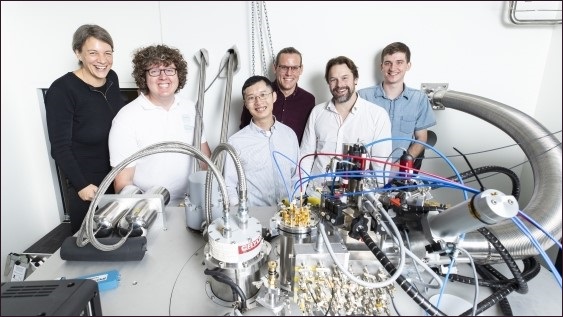Researchers at the University of New South Wales (UNSW) have made a major breakthrough in quantum computing.
A team led by 2018 Australian of the Year, Professor Michelle Simmons, has developed the fastest ever two-qubit gate between atoms suspended in silicon.
The extremely small logic gate completed an operation in 0.8 nanoseconds – roughly 200 times faster than other spin-based two-qubit gates.
“Optimising every aspect of the device design with atomic precision has now allowed us to build a really fast, highly accurate two-qubit gate, which is the fundamental building block of a scalable, silicon-based quantum computer,” Simmons said.
“We’ve really shown that it is possible to control the world at the atomic scale – and that the benefits of the approach are transformational, including the remarkable speed at which our system operates.”
Similar to how a classical computer works based on transistors in on/off states (bits), this quantum computer represents the spin orientation of electrons as binary information (qubits).
By also taking advantage of unique features of quantum physics like superpositions and entanglement, quantum computers will have exponentially more computing power.
But controlling individual electrons is proving extraordinarily difficult.
“This is a massive advance: to be able to control nature at its very smallest level so that we can create interactions between two atoms but also individually talk to each one without disturbing the other is incredible,” Simmons said.
“A lot of people thought this would not be possible.”
Now that these UNSW researchers have developed a proven method for containing and measuring qubits in real time, their next step is to scale up.
They aim to build a 10-qubit quantum integrated circuit within the next four years.
Unleashing quantum potential
Much more work must be completed before quantum computers come close to matching the capabilities of modern computers.
Microprocessors contain billions of transistors with hundreds of millions of logic gates.
The largest IBM Q processor, on the other hand, has only 20 qubits.
While they continue to develop, quantum computers will get closer to completing tasks that are too time-consuming or simply impossible for classical computers to complete – like brute-force attacks on cyber security systems.
Research using quantum computers has already offered new challenges to conventional physics, such as the ability to reverse time.
The next step in computing will also open the way for simulations of the natural world that have astonishing fidelity, as Jeffrey Welser from IBM Research recently explained.
“A qubit can be a one and a zero at the same time. And you can entangle them so you can actually do massively parallel operations across these qubits allowing us to solve certain problems that would be intractable even on the world’s largest supercomputers,” he said.
“The molecule of caffeine is about 95 electrons – not particularly large – but to do an exact simulation of that would require 10 to the 48 classical bits.
“And the planet Earth only has 10 to the 50 atoms in it, so you’re never going to build a system that big.
“On the other hand it would only take 160 qubits to do it.”










